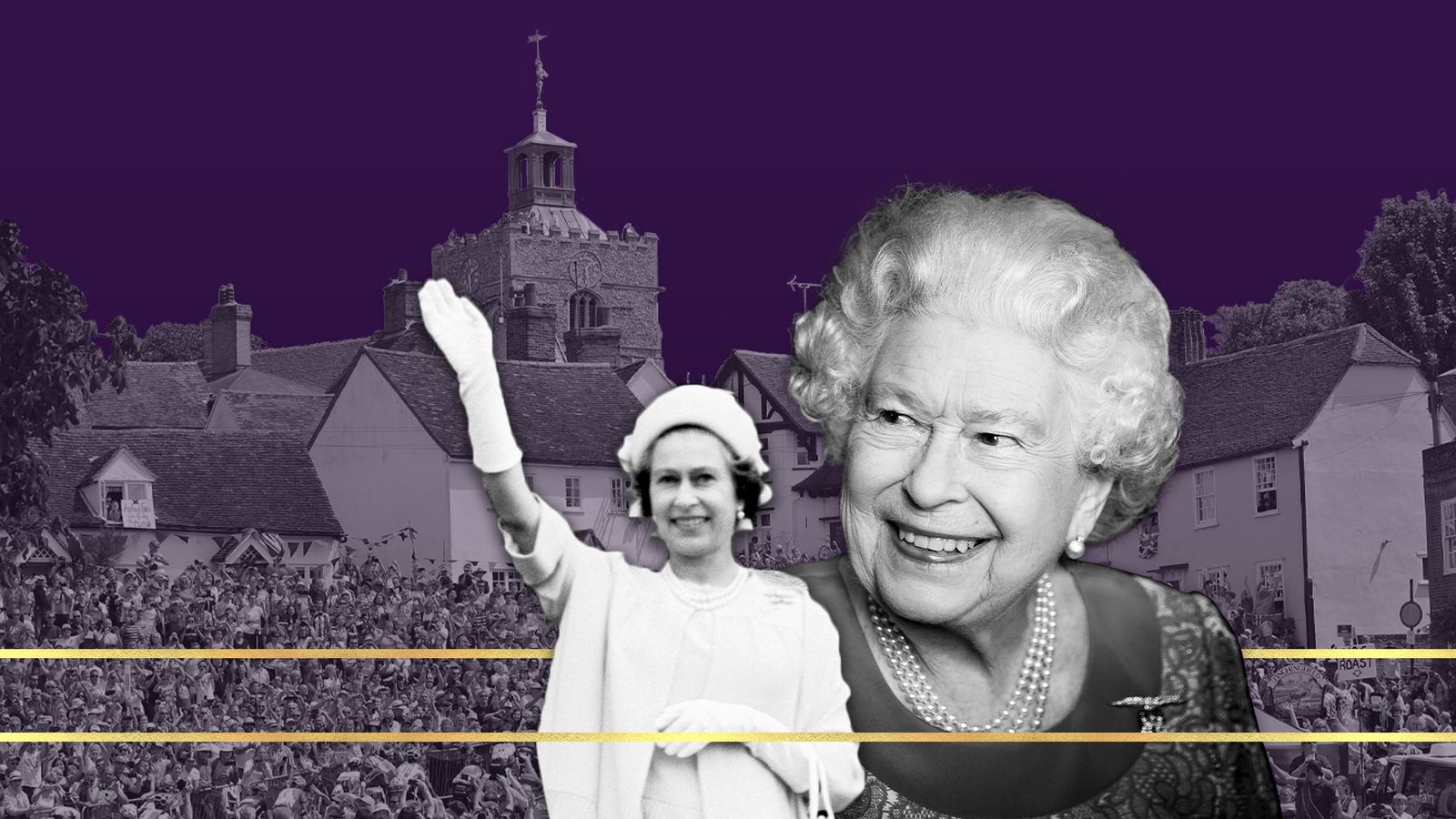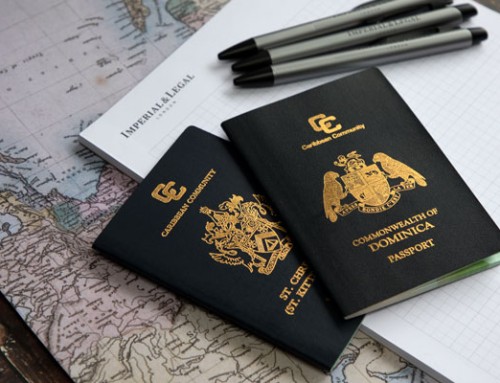From what we do for work, how many children we have and our energy sources, to the strength of sterling, the United Kingdom has changed a great deal since the Queen came to the throne.
It is hard to think of another monarch who ruled over quite so much social, cultural and economic change as Queen Elizabeth II.
In her 70-year reign, the UK was utterly transformed and this might have been what has made her passing quite so significant and impactful for so many people, why even those who never considered themselves monarchists have found themselves unexpectedly touched.
Human beings are hard-wired to crave stability, and in this era of constant change and flux, the Queen was a constant. A glance at historical data – showing a shift not only in our economy but also our culture, labour market and the energy system that knits us together – and you can see seismic changes. The country over which the Queen reigned was astoundingly different in 2022 than it was in 1952.
How migration and fertility rates changed the population
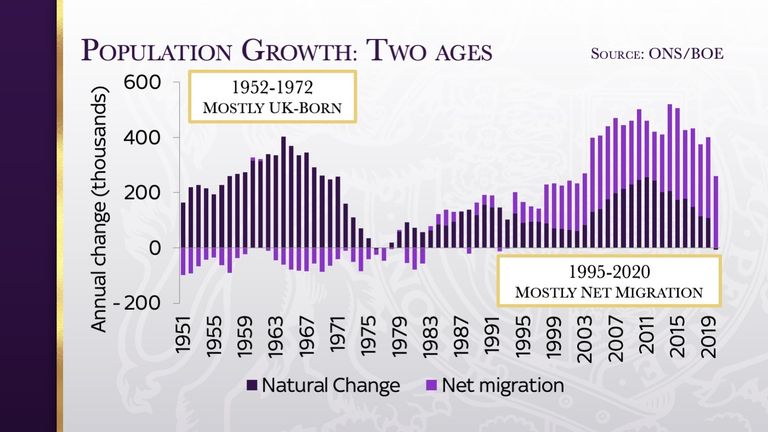
The best place to start is with one of the most important of all numbers: the population. During the Queen’s reign, the number of people living in the UK population grew by 17 million, from just over 50 million in 1952 to just over 67 million in 2021. What’s striking about this increase in population is that it happened in two stages.
In the 1950s and ’60s there was a big increase in what’s sometimes known as the “natural change” in the population (births minus deaths). This gives you a sense of how the UK’s domestic population contributed to changes in their numbers. But that natural change slowed in the 1970s and thereafter never recovered to the levels of the ’50s and ’60s.
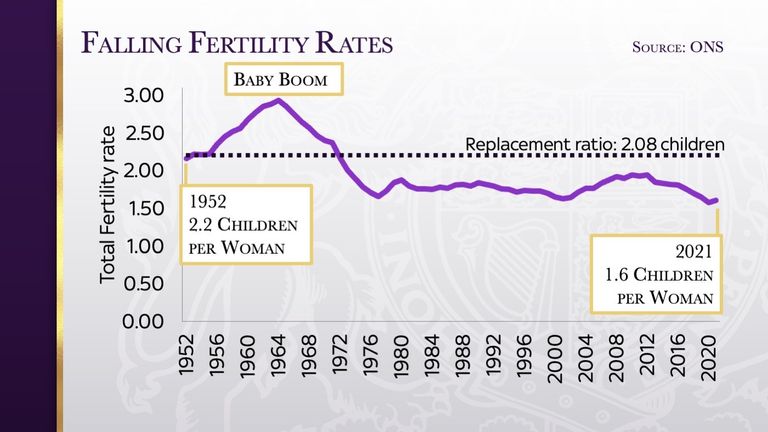
To some extent, this reflects another statistic which has changed over time: the total fertility rate, a number representing a calculated average of how many children each woman in the country gives birth to. Having started the Queen’s reign at 2.2 children per woman and risen to around three in the baby boom in the 1960s, the fertility rate dropped in the 1970s and recently hit the lowest level in history: just under 1.6. Simply put: people in the UK seem to be having fewer children.
Migration is what drives the increase in population in the second half of the Queen’s reign. While in the 1950s, 60s and 70s there was a net outflow of people from the UK – the “brain drain” as it’s sometimes called – from the 1990s onwards the number of migrants coming into the country dramatically outweighed those leaving. Many, but not all, of these people came from the EU. It was an enormous cultural shift.
A shift in the number of men working – and the rise of office workers
Nor was it the only such shift. Consider what was happening in workplaces at the same time. The proportion of women working increased dramatically, up from around 40% in the 1950s to 74% in recent years. Places of employment became somewhat less male too, with male employment levels falling slowly from 95% to 84%.
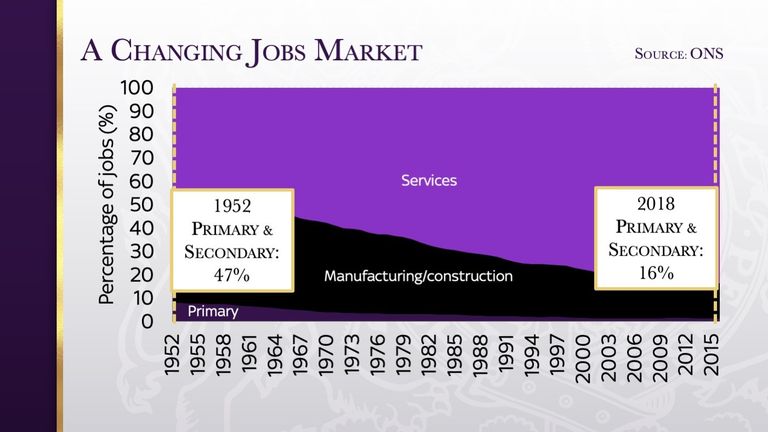
And the types of jobs we were doing changed too. Back in 1952, around 47% of employees worked in what are known as “primary” or “secondary” sectors: farming, mining, manufacturing and construction. Yet by 2018, that had dropped to only 16%. This country, whose economy used to be all about making things, became one utterly dominated by the services sector – a nation of office workers, marketers and retailers. A nation of shopkeepers, you might even say.
That brings us to the broader question about the economy, and whether what we’re talking about is a period of decline or of prosperity. The short answer is both. During the Queen’s reign, we all became considerably wealthier: national income per capita (which is measured in dollars so that we can compare it to other countries) rose from $11,303 in 1952 to $38,058 in 2018. This was a serious increase in our standard of living.
Source: Skynews UK

